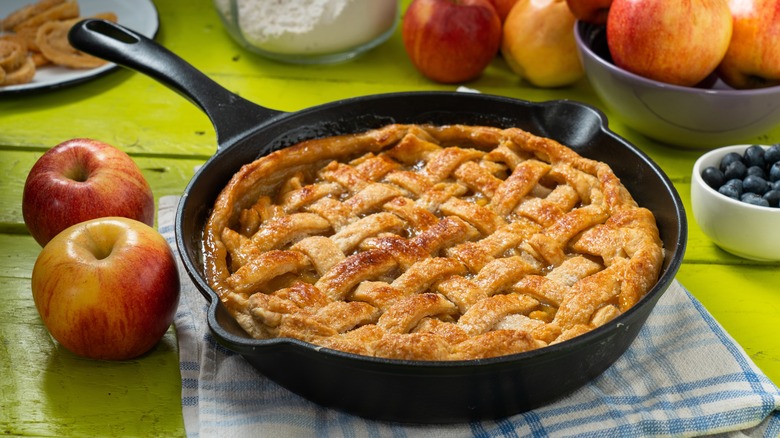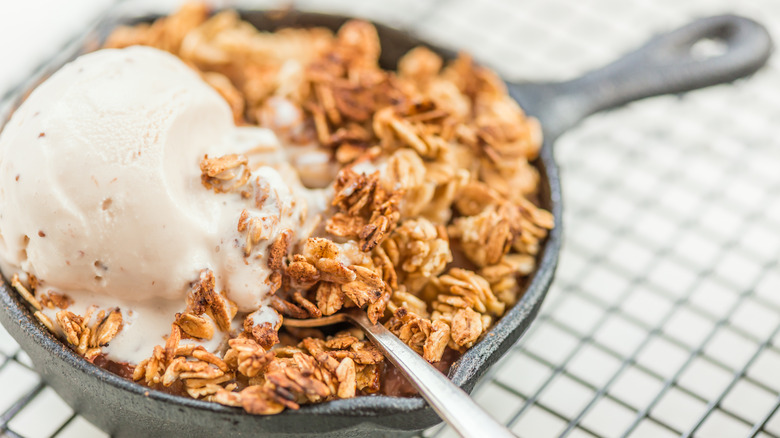Should You Make Pie In A Cast Iron Skillet?
It's not just about your meat! While you've probably heard about the many benefits of cooking with cast iron before, most of those recipes likely revolved around cooking meat. The nearly indestructible kitchen workhorse retains heat well, making it ideal for searing tonight's ribeye or frying Sunday's fried chicken to achieve the perfect crust.
With proper maintenance, cast iron skillets can be passed down from generation to generation, allowing home cooks to go from cooking on the kitchen stove to cooking over an open flame at the campgrounds. Even a neglected cast iron skillet can be cleaned and re-seasoned for all your favorite recipes.
A properly seasoned cast iron pan is naturally nonstick, giving the cook even more options for what to prepare in their trusty skillet. This feature of the cookware is particularly useful this time of year, when kitchens nationwide get into the pie game for the holidays. Instead of reaching for a shallow pie plate or purchasing a flimsy aluminum tin this Thanksgiving, consider using grandma's cast iron frying pan to make your sweet potato, blueberry, pumpkin, or apple pie for dessert. You won't be disappointed.
Yes, to cast iron pies
The same reason cast iron is the go-to when searing steak for dinner is also why the pan produces terrific results when baking. According to America's Test Kitchen, the pan's metal surface conducts heat better than its hot-spot-creating glass and aluminum foil counterparts, achieving a beautiful golden brown crust when baking any double-crust pie or cobbler.
To pull this off, use your favorite deep dish pie recipe, since cast iron is twice as deep as a traditional pie plate. A well-seasoned nine- or 10-inch cast iron skillet can be used without adjusting the filling-to-crust ratio in the recipe. To account for the deeper pan, place a little more than half of the crust on the bottom and up the sides of the pan, reserving the remaining crust for the top.
One tip: Southern Living advises keeping the top crust inside the pan, which saves you some work. The deep sides of a cast iron skillet eliminate the need to crimp the pie's edges — plus they prevent the sugary fruit juices from bubbling over and ruining the bottom of your oven. For the most even heating process, bake the pie on the bottom shelf of the oven to achieve a flaky crust. Once it's done, carry the cast iron pan directly from the oven to the table, farmhouse-chic style. Whether you grab a fork and dig in or cut an impressively thick slab of pie, you may never return to your old baking method again.

